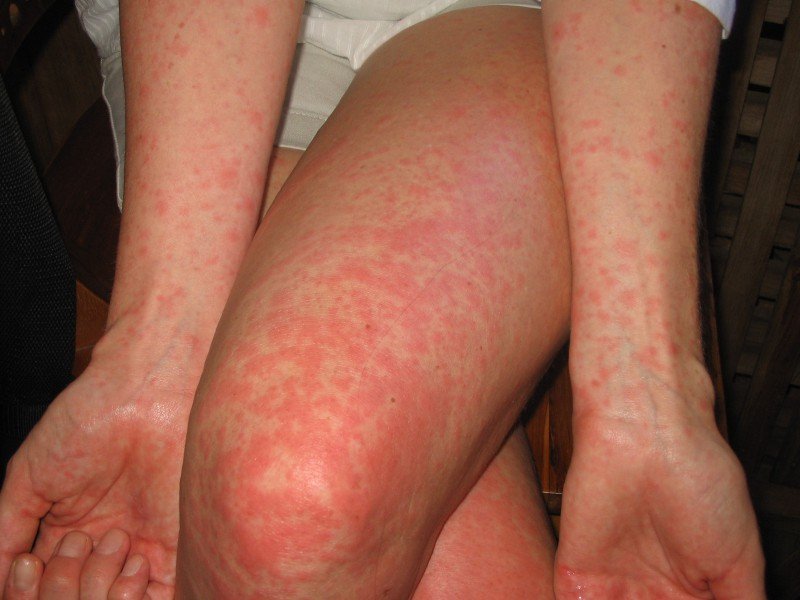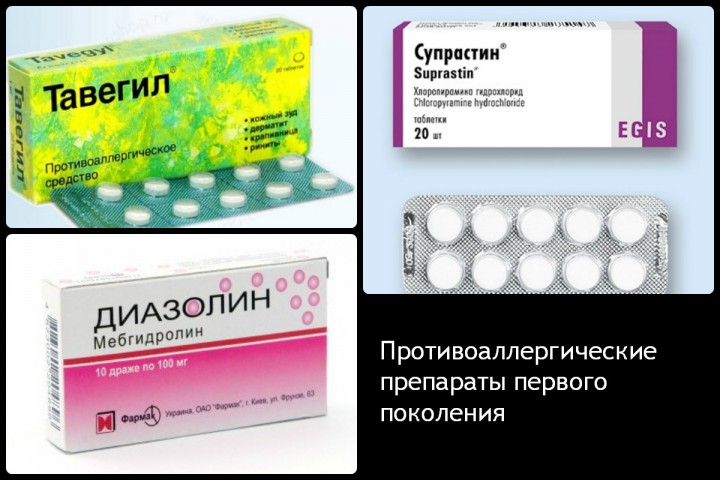Adults who have two symptoms at the same time, such as a high temperature (38 C and above) and a skin rash, should urgently call an ambulance. The fact is that the simultaneous appearance of a high temperature and a rash can signal a life-threatening condition. Survival is significantly higher with aggressive treatment at the onset of these difficult to diagnose diseases. Taken separately, a skin rash and high body temperature may appear mild, but the combination of these symptoms in adults can be a sign of a serious or life-threatening illness. Survival is dramatically improved in patients who receive prompt, aggressive treatment for the underlying cause of the rash.
Nurofen does not help a child sleep better! Increasingly, parents are choosing to let their child fight the infection rather than intervene to allow the body to gain immunity. They occur in children aged 6 months to 5 years with a maximum incidence at 18 months of age. Although they do not cause long-term neurological damage, the emotional impact on the parent is very large.
Younger people may be more sensitive to the harmful effects of sunlight. A pathological condition caused by prolonged exposure to high temperatures is called sunburn. From the outset, it should be said that heat-related diseases are an important cause of global death, especially in warmth, but can be prevented.
People often think that the rash is not a serious symptom, so treatment delays occur. However, a skin rash in combination with a high body temperature (especially in adults!) Is a clear indication of an acute systemic disease that requires further diagnosis and urgent treatment. Only early diagnosis and treatment of the disease causing the fever and rash can quickly prevent death.
Or, rather, what happens to the human body when exposed to the sun? In a high-temperature environment, the human body "escapes" excess heat by increasing blood flow to the skin through sweat and exhalation of warm air; when these mechanisms are exceeded, signs of sunstroke can be observed.
If the air temperature is too high, the body reaches heat faster than it can get rid of it, the body's thermoregulatory system cannot cope, so the internal temperature can reach alarming levels, causing other organs to damage the brain.
Toxic shock syndrome, originally associated with tampon use in the 1980s, remains a major problem. While mortality rates associated with tampon use during menstruation have dropped to less than 5%, the rate of occurrence of toxic shock syndrome remains relatively unchanged. Cases of toxic shock syndrome in patients after surgery or trauma affect patients of all ages and genders; 3 times more likely to be fatal.
Therefore, the severity of symptoms caused by exposure to sunlight is primarily associated with dehydration, loss of salts, and damage to the thermoregulatory system. Does the little one have sun exposure? How do you know if your chicken is suffering from sunburn? In the first stage, the symptoms are more or less annoying or obvious - swelling of heat or rash may occur.
While not serious, these symptoms are warning signs of possible sunstroke. In a more advanced phase, the body temperature begins to rise, the general condition gradually worsens, the small one may become unconscious, with a mentally altered status - with dizziness, confusion, delirium, even convulsions; the skin becomes dry and hot; blood pressure initially increases and then collapses.
Some of the more serious conditions associated with rashes and high fever include:
Toxic shock syndrome caused by a bacterial infection
Toxic epidermal necrolysis, often caused by drug use
Staphylococcal scalded skin syndrome caused by a bacterial infection
Tick-caused Rocky Mountain Spotted Fever
Meningococcemia caused by a bacterial infection
Fulminant purpura, caused by thrombotic disorders
Acute toxic shock syndrome caused by a bacterial infection
These diseases are relatively rare, and their diagnosis is extremely difficult. Therefore, when symptoms such as high body temperature and rash appear, you need to quickly call an ambulance.
It is important to remember that this condition is a serious emergency. medical helppotentially fatal, requiring intensive treatment in a medical clinic, so in the face of such an event, the first thing to do is to call for salvation. Dress the youngest with a coat as light, light and preferably light.
Get used to drinking more fluids per day - especially water; no matter how long you pray, avoid giving him sugary caffeinated drinks. Do not forget about the danger of sunburn if you are in the sea or somewhere on the beach; apply regular anti-splash creams or sprays.
Children often have "mild" viral diseases that cause skin rashes and are accompanied by high fever. In adults, the combination of these symptoms requires rapid diagnosis. After all, these dangerous diseases are treatable at the earliest, most curable stages.
Another reason for rashes with fever is certain types of allergies (food, insect bites).
In children, in parallel with the rash, there may be inflammatory process and the temperature rise.
A rash with a temperature leads to the appearance of vomiting, chills, diarrhea, migraine. Children may develop seizures and light-headedness. It is undesirable to bring down the temperature to 38 ° C, since the body itself fights the infection, but if it reaches 39 ° C and keeps at this level, you need to call an ambulance.
Etiology and symptoms
Infectious diseases
A high fever and a rash in a child most often accompany chickenpox. The disease also affects adults, but about 85% of the population get it in childhood. Typical symptoms of chickenpox:
- temperature 37-38 ° C (sometimes 39-40 ° C), which occurs even before the rash;
- vesicles with fluid on the skin of the whole body and sometimes mucous membranes;
- itching where blisters appear;
- an increase in the number of rashes, followed by their drying and crust formation;
- weakness, dizziness, headache;
- loss of appetite.
With rubella, the nature of the rash is different: these are not large pimples, as with chickenpox, but small red rashes, accompanied by all signs of acute respiratory infections (aches, runny nose, feeling unwell).
Also characteristic are pain in the eyes, aggravated by bright light, an increase in the occipital lymph nodes. The temperature lasts a couple of days. The rash spreads to the face, chest, back, and abdomen (in children).
These diseases are relatively easily transferred to childhood, but in adolescents and adults, the course is complicated.
Infection with chickenpox or rubella during gestation is especially dangerous.
The reason sharp rise fever with cough, runny nose and conjunctivitis may be less common measles. On the 3rd day, profuse rashes appear, first on the face, then on the chest, abdomen, back, arms and legs. A small rash gradually merges into spots, which for some time leave behind pigmentation and peel off.
Scarlet fever is manifested first by redness of the throat, enlargement of the tonsils, then a rash appears on the skin of the neck, the temperature rises, the nasolabial triangle becomes bluish, and the tongue becomes crimson. Itchy rashes appear on the back and chest, but there are especially many of them under the armpits, lower abdomen, inside the thighs and in the skin folds. Symptoms last 7 days.
Infectious erythema is another "childhood" disease with symptoms similar to acute respiratory infections. A rash (red dots) occurs first on the cheekbones, gradually merging into a pattern. Such patterns then cover the entire body, swelling in places.
Herpes in infants can also cause fever, sudden temperature spikes of up to 39-40 ° C, and rubella-like rashes after a few days.
Another extremely dangerous pathology is meningococcal infection, accompanied by a jump in temperature, aches, and a runny nose. Pink rashes then degenerate into subcutaneous hemorrhages.
Vascular pathology
 A high fever and rash in an adult can be triggered by viral arthritis.
A high fever and rash in an adult can be triggered by viral arthritis.
The disease is accompanied by swelling and pain in the joints, head, runny nose, nausea, redness of the skin.
A person cannot move calmly.
A rash in such situations appears either due to problems with the number and functioning of platelets, or due to impaired capillary vascular permeability. Injuries or fever in various diseases lead to a rash in the form of hemorrhages.
Allergy
A variety of rashes for allergies are not uncommon, but the temperature can rise from insect bites, ingestion of allergenic food. When treating viral infections with a high fever, a rash can occur, like an allergy to a medicine (such as penicillin).
Therapy
Therapy for skin rashes with fever depends on the cause of their appearance.
Some rashes with fever can go away without special treatment. For example, rubella, in the therapy of which the main thing is to provide the child with plenty of drink and place him in a darkened room.
Treatment of scarlet fever, chickenpox and other infectious diseases necessarily includes taking antibiotics. Many diseases are fraught with complications, so it is necessary to adhere to all the recommendations of a specialist and not interrupt therapy at the first improvement in the condition.
Pathologies that are not dangerous in childhood can cause great harm to the fetus if a pregnant woman falls ill.
Therefore, during the planning period for conception and gestation, contact with infected people should be avoided.
 As an antipruritic agent for allergies and viral infections antihistamines are shown. It is recommended to lubricate bubbles on the skin with brilliant green, fucorcin and other drying substances. With chickenpox, it is useful to take baths with chamomile, string or manganese.
As an antipruritic agent for allergies and viral infections antihistamines are shown. It is recommended to lubricate bubbles on the skin with brilliant green, fucorcin and other drying substances. With chickenpox, it is useful to take baths with chamomile, string or manganese.
When high temperature (38-39 ° C and more) you need to drink antipyretic.
For viral arthritis, pain relievers are indicated, sometimes clucocorticoids, bed rest. The operation is rarely performed.
Thus, there are many causes of rashes with fever and it is not always possible to accurately determine them only by symptoms. Therefore, at the first signs of pathology, you should immediately consult a doctor.
